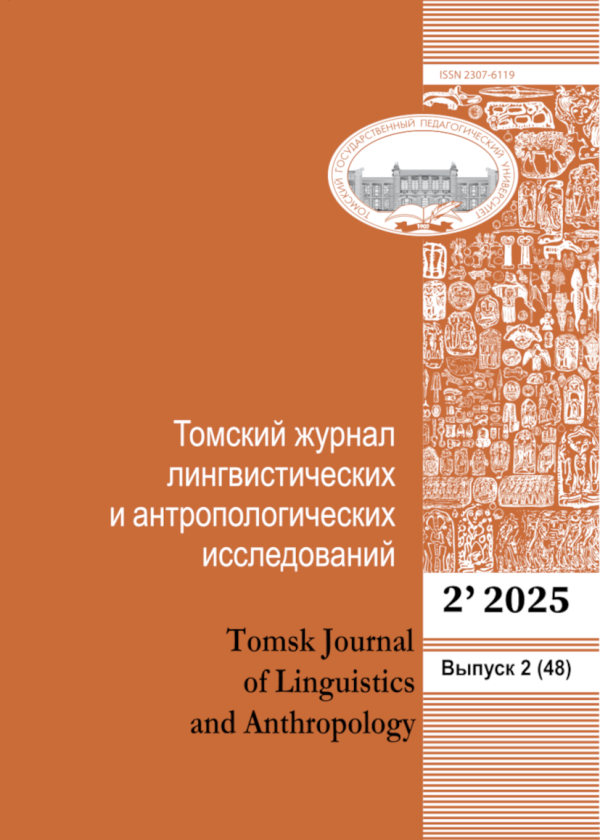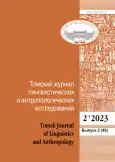The article is devoted to another attempt to determine the ethnolinguistic affiliation of one of the most enigmatic polytonyms of pre-Russian Siberia – Pegaya Horde as a name for the entire population of a given territory, without taking into account their ethnic, linguistic, and cultural identity. Under the politonym, Pegaya Horde all nomadic peoples of Siberia were united in the post-Mongol era. In the pre-Mongol (or Mongol) era, Chinese chronicles recorded the polytonym Boma “skewbald” (驳-马 [bo-ma] 'skewbald (spotted) horse') or Alakchin (as well as Alats) as the name of a particular tribe that had skewbald (different, motley ) horses. If the first part of the socionym Pegaya Horde is conceptually connected with Boma, Alakchin, Alats, and the Olkhonud tribe of Mongols, the base of which is connected with the Altaic appellative alag / alha 'motley, piebald,' then the second part of the socionym – Horde, is connected with the Mongolian ard '1'. arat, worker; people; ard tumen parn. people'. The mysterious Boma's localization corresponds to the Mongol ecumene area, which geographically coincides with the northeastern part of the modern Transbaikalian territory, including the northern areas of China – Manchuria, Khulunbuir and Hailar. An analysis of the meaning of these onyms, usually associated with Mongol ecumenism, allowed us to assume that the Olkhonүүd onym of the Mongols, as well as Boma, Alakchin and Alat ('s), have a Samoyedic origin. Note that the term "motley" is ethnographically embedded in key images of the Buryat-Mongol world. In addition, we have compared the synonymous Boma onym as hetsy (or khela), recorded by Chinese chroniclers as another name for the Boma people, with the genonym Huatsai / Hoatsai Khori-Buryat. The genonym Huatsay / Hoatsay as the name of one of the largest clans of the eastern group of the Buryats – the Khori- Buryats – has a similar meaning to the anthroponym KHASAEV, which was recorded in the census of the indigenous people of the Irkutsk province of Aginsky Steppe Duma for 1830 and is the personal name of the Buryats of the Huatsay clan. We compare the name KHASAEV (in the name of KHASA) in the Buryat census for 1830 with the Nenets Khasyo, but without excluding the possibility of comparing this historical anthroponym with the proper name of the Nenets – Khasava '1) male; khasava Ҋatseky boy'; hasava nu 'son.' Further analysis of this personal name KHASAEV made it possible to compare its meaning with the Nenets hasho '1. figurative man; 2. (with a capital) Hasyo (masculine proper name)', which suggests to us that the genonym Huatsai was formed from this name, which was once an eponym. The Samoyedic-speaking beginning (and some Ket-speaking tribes) is observed in the genonymy of the Khori-Buryats and Tungus of Gantimur in the Nerchinsk district of the 17th–19th centuries as the autochthonous population of the historical Dauria of the Russian period in the history of Eastern Transbaikalia. Based on the onomasiological approach, the method of conceptual metaphor as an effective method, coupled with the method of conceptual metonymy, was constructive and allowed to describe the pre-ethnonymic and self-ethnonymic meanings of historical onyms in the projection of nomadism, which have a self-descriptive (including Ket ) ethnolinguistic origin.
 9-20
9-20


 21-36
21-36


 37-48
37-48


 49-64
49-64


 65-78
65-78


 79-89
79-89


 90-99
90-99


 100-113
100-113


 114-128
114-128


 129-141
129-141


 142-150
142-150


 151-163
151-163


 164-168
164-168












